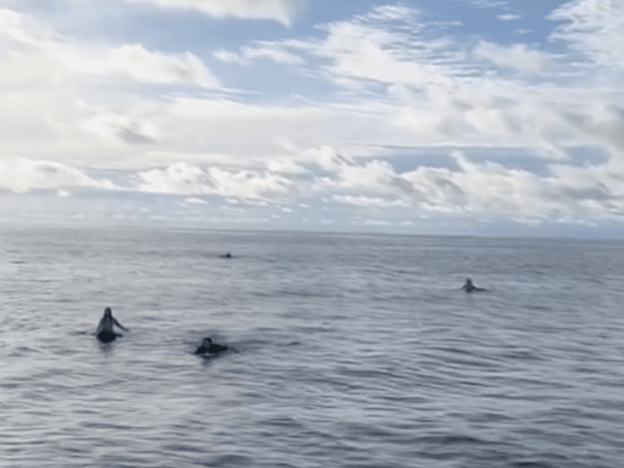On August 13, a boat carrying four Australian surfers and two Indonesian crew members went missing during a storm when travelling to Pinang Island, a remote surfing destination off the Indonesian island of Sumatra. They were found drifting on their surf boards after 38 hours at sea, reportedly without significant injury. The search was successful in part due to the knowledge of local surf charter companies, who had expert knowledge of the drift currents that influenced the trajectory of the surfers.
Another recent ocean rescue involves a swimmer who was swept by a current towards open water off the coast of Long Island, New York. He was found 2.5 miles from his initial starting point after treading water for five hours. He was spotted thanks to a makeshift flag he had constructed out of a t-shirt and fishing pole that he found drifting by. He appeared to have early signs of hypothermia and had difficulty supporting himself immediately upon rescue but was reported to be back home after being evaluated at a local hospital.
Open water rescues have their own special considerations due to the prolonged exposure time in water. The most common complications encountered include hypothermia, dehydration, and fatigue. One of the first responses to immersion is cold shock. This physiological response occurs when peripheral soft tissue and nerves are first exposed to cool water and can lead to uncontrolled hyperventilation and increased cardiac workload leading to fatal arrythmias. Hyperventilation may also lead to ingestion of water and drowning. Cold shock can be mitigated by wearing a wetsuit/drysuit. There is also data that shows that repeated immersions can habituate the body to the extreme temperature change.
Swimmers and other athletes immersed in water for long periods of time are especially susceptible to hypothermia as the body loses heat at a rate 25 times faster in water versus air. There is also a phenomenon known as “short term rescue collapse” in which individuals with severe hypothermia have hemodynamic decompensation immediately after rescue. This may be due to the handling and moving of patients from supine to standing too rapidly which leads to rapid return of cool blood from the extremities, leading to ventricular arrhythmias. Rescuers should take great care when handling these patients.
Dehydration and emesis may occur when out a sea with accidental ingestion of hypertonic sea water. When immersion is prolonged, cooling the body may also lead to cold diuresis. All of these can further decrease intravascular reserve. Collecting and consuming fresh rainwater can be considered pending the circumstances. Limiting excessive protein consumption may also be beneficial in conserving water as protein metabolism requires high volumes of water from within the body.
Depending on the environment, trauma from diving or drowning may need to be considered. If drowning is suspected, ACLS protocols should be followed, with particular attention to ventilation due to the prevalence of pulmonary edema and hypoxia in these patients. Additional variables that should be considered during open water rescues include environmental toxins, wildlife injuries, barotrauma or nitrogen toxicity (if diving), trench foot, salt water/cercarial dermatitis, as well as other hazards from swift water or ice floes. Equally important is the psychological health of the patient: post-traumatic functioning may be impacted in the short and long term and patients should be given resources for specialized support.
There are important precautions to take for rescuers as well. These include wearing PPE such as life vests and dry suits and carrying equipment such as a lifeline, whistle, helmet, gloves, knife, and light source at all time. As with all rescues, your own personal safety always comes first!

The four Australian surfers, found floating in the open water on surfboards. Photo taken moments before their rescue. Source: Surfer.com

Dan Ho, open water swimmer found off of Long Island. He is wrapped in a thermal blanket for suspected hypothermia due to prolonged immersion. Source: NBCnews.com